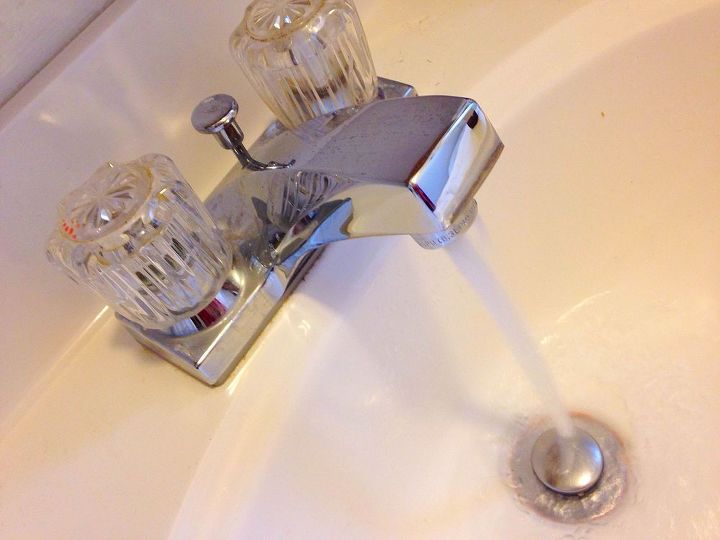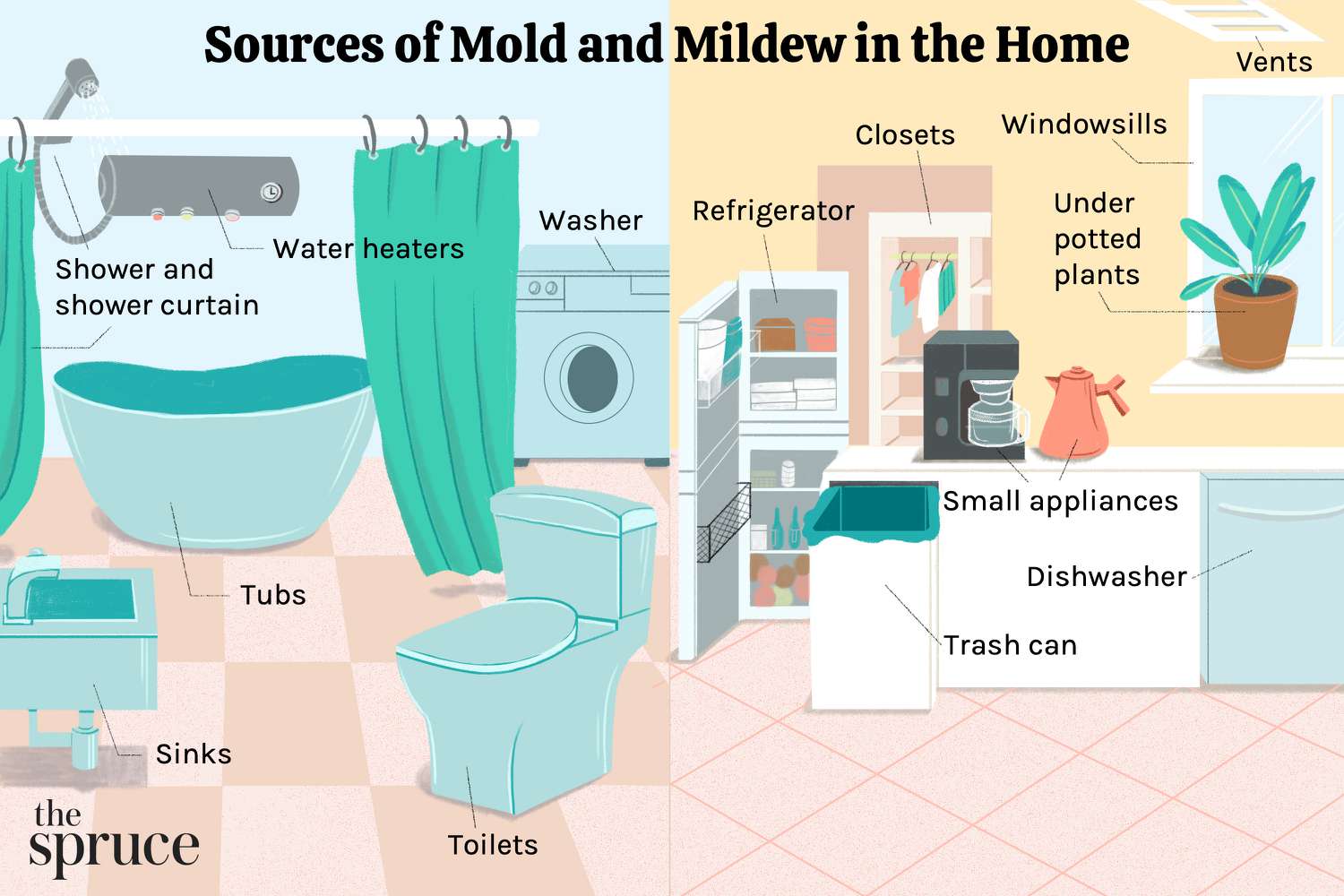To eliminate mildew smell under your bathroom, clean affected areas with a mixture of vinegar and water. Ensure proper ventilation to prevent future odors.
Mildew smell in the bathroom can be both unpleasant and persistent. This odor typically arises from dampness and lack of proper ventilation. Bathrooms are often humid, creating an ideal environment for mildew to thrive. Ignoring this issue can lead to health problems and further damage to your home.
Effective solutions exist to tackle this problem and restore freshness. Regular cleaning and maintenance can significantly reduce mildew growth. Using natural ingredients, such as vinegar and baking soda, can help neutralize odors. Implementing better airflow through ventilation fans or windows is essential for long-term prevention. Take action now to ensure a clean, fresh bathroom space.

Credit: www.youtube.com
Introduction To Mildew In Bathrooms
Mildew is a common problem in bathrooms. It creates a musty smell that can linger. Understanding mildew helps in preventing its growth. This section explores mildew formation and why bathrooms are vulnerable.
The Basics Of Mildew Formation
Mildew is a type of fungus. It thrives in damp areas. Here are the main factors for its growth:
- Moisture: High humidity levels create a perfect environment.
- Warmth: Bathrooms often have warm temperatures.
- Poor ventilation: Stale air traps moisture.
These conditions lead to mildew growth. It can quickly spread on surfaces like:
- Walls
- Ceilings
- Shower curtains
- Grout lines
Why Bathrooms Are Prone To Mildew Smells
Bathrooms are naturally humid. They often lack proper air circulation. Several reasons contribute to mildew smells:
- Showers and baths: Water evaporates, increasing humidity.
- Spills: Water splashes on floors and counters.
- Steam: Hot showers create excess moisture.
- Infrequent cleaning: Dirt and soap scum provide food for mildew.
These factors make bathrooms a breeding ground for mildew. Taking action can reduce the smell and improve air quality.
Identifying The Source Of Mildew Smell
Finding the source of mildew smell is essential. It helps eliminate the odor and prevents future issues. Start by looking for signs of mildew. Then, check common areas where mildew hides.
Signs Of Mildew Presence
- Musty odor: A strong, unpleasant smell.
- Visible mold: Dark spots on walls or ceilings.
- Discoloration: Yellow or brown stains on surfaces.
- Peeling paint or wallpaper: Indicates moisture problems.
- Wet or damp surfaces: Persistent moisture creates mildew.
Common Areas Under Scrutiny
| Area | Reason for Inspection |
|---|---|
| Shower and bathtub | High moisture levels encourage mildew growth. |
| Bathroom floor | Trapped water can create mildew. |
| Behind the toilet | Leaks can lead to mildew buildup. |
| Sink area | Water splashes can cause dampness. |
| Ventilation fan | Dust and moisture can accumulate. |
Check these areas regularly. Early detection prevents larger problems. Keep your bathroom dry and well-ventilated.
Preventive Measures
Preventing mildew smell in the bathroom is essential. Simple actions can stop odors before they start. Focus on ventilation and regular cleaning habits. These steps will keep your bathroom fresh and pleasant.
Improving Ventilation
Good ventilation helps reduce moisture. Here are some effective ways to improve airflow:
- Open windows when possible.
- Install an exhaust fan.
- Leave the bathroom door open after use.
- Use a dehumidifier if humidity is high.
Consider using a fan timer. Set it to run for at least 30 minutes after a shower. This helps clear out moisture quickly.
Regular Cleaning Habits
Keeping the bathroom clean prevents mildew buildup. Create a simple cleaning routine:
- Wipe down surfaces weekly.
- Clean grout and tiles monthly.
- Check for leaks regularly.
- Use mildew-resistant products.
Focus on these key areas:
| Area | Cleaning Frequency |
|---|---|
| Shower/Tub | Weekly |
| Sink | Weekly |
| Toilet | Bi-weekly |
| Floor | Weekly |
Use a mixture of vinegar and baking soda for cleaning. This natural solution fights mildew effectively.
Natural Remedies For Mildew Removal
Mildew smells can be unpleasant. Natural remedies are effective and easy to use. They help eliminate odors without harsh chemicals. Here are two top remedies: vinegar and baking soda.
Vinegar Solution
White vinegar is a powerful natural cleaner. It kills mildew and removes smells. Follow these simple steps:
- Mix equal parts of water and white vinegar.
- Pour the solution into a spray bottle.
- Spray the affected areas generously.
- Let it sit for at least 30 minutes.
- Wipe clean with a cloth.
Vinegar has a strong smell at first. This smell fades quickly. It leaves your bathroom fresh and clean.
Baking Soda Effectiveness
Baking soda is another great option. It absorbs moisture and odors. Here’s how to use it:
- Sprinkle baking soda on the mildew area.
- Let it sit for several hours or overnight.
- Vacuum or sweep up the baking soda.
- For tougher spots, mix baking soda with water to form a paste.
- Apply the paste to the area, let it dry, and scrub.
Baking soda is safe for most surfaces. It works well in damp areas like bathrooms. Use it regularly for best results.
| Remedy | Benefits | Usage |
|---|---|---|
| Vinegar | Kills mildew, deodorizes | Spray and wipe |
| Baking Soda | Absorbs odors, safe | Sprinkle or paste |
Using these natural remedies is easy. They can help keep your bathroom fresh. Enjoy a mildew-free environment.
Commercial Products That Help
Getting rid of mildew smell in your bathroom is essential. Using the right commercial products can make a big difference. These products are designed to target and eliminate mildew odors effectively.
Choosing The Right Cleaner
Selecting the right cleaner is crucial for success. Here are some effective options:
- Bleach-based cleaners: Strong and effective against mildew.
- Vinegar sprays: Natural and safe for daily use.
- Mildew removers: Specifically formulated for tough odors.
- Enzyme cleaners: Break down mildew at the source.
Consider these factors:
| Product Type | Pros | Cons |
|---|---|---|
| Bleach-based | Fast-acting, kills germs | Strong odor, can damage surfaces |
| Vinegar | Natural, safe | May require multiple applications |
| Mildew removers | Targeted action, effective | Can be costly |
| Enzyme cleaners | Eco-friendly, effective | Slower action |
Safety Precautions
Safety is important while using these products. Follow these precautions:
- Always read the label before use.
- Wear gloves to protect your skin.
- Use masks to avoid inhaling fumes.
- Ensure good ventilation in the bathroom.
- Keep products out of reach of children and pets.
Taking these steps helps ensure a safe cleaning experience. Choose your products wisely for best results.

Credit: www.reddit.com
Deep Cleaning Strategies
Removing mildew smell requires effective deep cleaning strategies. This process eliminates odors and prevents future growth. Follow these steps for a fresh, clean bathroom.
Step-by-step Guide
- Prepare the area: Remove all items from the bathroom.
- Ventilate: Open windows and doors for airflow.
- Mix cleaning solution:
- Combine equal parts of water and white vinegar.
- Add a few drops of dish soap.
- Scrub surfaces:
- Use a scrub brush on walls and corners.
- Focus on areas with visible mildew.
- Rinse: Wipe surfaces with clean water.
- Dry: Use towels to absorb excess moisture.
- Replace items: Put back only clean items.
Tools And Materials Needed
| Item | Purpose |
|---|---|
| Scrub brush | To scrub surfaces and remove mildew. |
| White vinegar | Natural cleaner and deodorizer. |
| Dish soap | Helps to cut through grime. |
| Towels | To dry surfaces after cleaning. |
| Bucket | To mix cleaning solution. |
| Protective gloves | To protect your hands while cleaning. |
Maintaining A Mildew-free Bathroom
A mildew-free bathroom is essential for a fresh home. Mildew not only smells bad but can also harm your health. Regular maintenance keeps your bathroom smelling clean and looking great.
Daily Practices
Simple daily habits can greatly reduce mildew. Here are some effective practices:
- Ventilate the bathroom after each use. Open windows or turn on exhaust fans.
- Wipe down wet surfaces. Use a towel or squeegee after showers.
- Keep toiletries organized. Avoid clutter that traps moisture.
- Use mildew-resistant products. Choose paints and sprays designed for bathrooms.
When To Seek Professional Help
Sometimes, mildew problems exceed DIY solutions. Look for these signs:
- Persistent mildew smell even after cleaning.
- Visible mildew growth on walls or ceilings.
- Water stains or damage from leaks.
- Allergies or health issues worsen in the bathroom.
Professionals can identify hidden sources of moisture. They use advanced tools for effective treatment.

Credit: www.hometalk.com
Frequently Asked Questions
What Neutralizes Mildew Smell?
Baking soda effectively neutralizes mildew smells. Place open containers in affected areas. Vinegar also absorbs odors; spray it directly on surfaces. Activated charcoal is another option; it traps odors in the air. Ensure proper ventilation to reduce mildew growth and odors.
Regular cleaning helps maintain a fresh environment.
How To Get Rid Of Musty Smell Under Bathroom Sink?
To eliminate musty smells under your bathroom sink, start by cleaning the area with a mixture of vinegar and water. Check for leaks and fix any plumbing issues. Allow the space to dry completely and consider placing an open box of baking soda to absorb odors.
Regularly ventilate the area.
What Is Causing The Musty Smell In My Bathroom?
A musty smell in your bathroom often results from mold or mildew growth. Poor ventilation can trap humidity, creating an ideal environment for these issues. Check for leaks in plumbing or walls. Regular cleaning and using a dehumidifier can help eliminate the odor effectively.
Will Mildew Smell Go Away Once Dry?
Mildew smell often lingers even after drying. The odor is caused by spores that can remain. Proper cleaning and ventilation are essential to eliminate the smell. Consider using baking soda or vinegar for effective odor removal. Regular maintenance prevents mildew from returning.
Conclusion
Getting rid of mildew smell in your bathroom is essential for a fresh environment. Regular cleaning and proper ventilation play key roles. Use natural solutions like vinegar or baking soda for effective results. By following these steps, you can ensure a cleaner, healthier space.
Say goodbye to unpleasant odors and enjoy your bathroom again!
